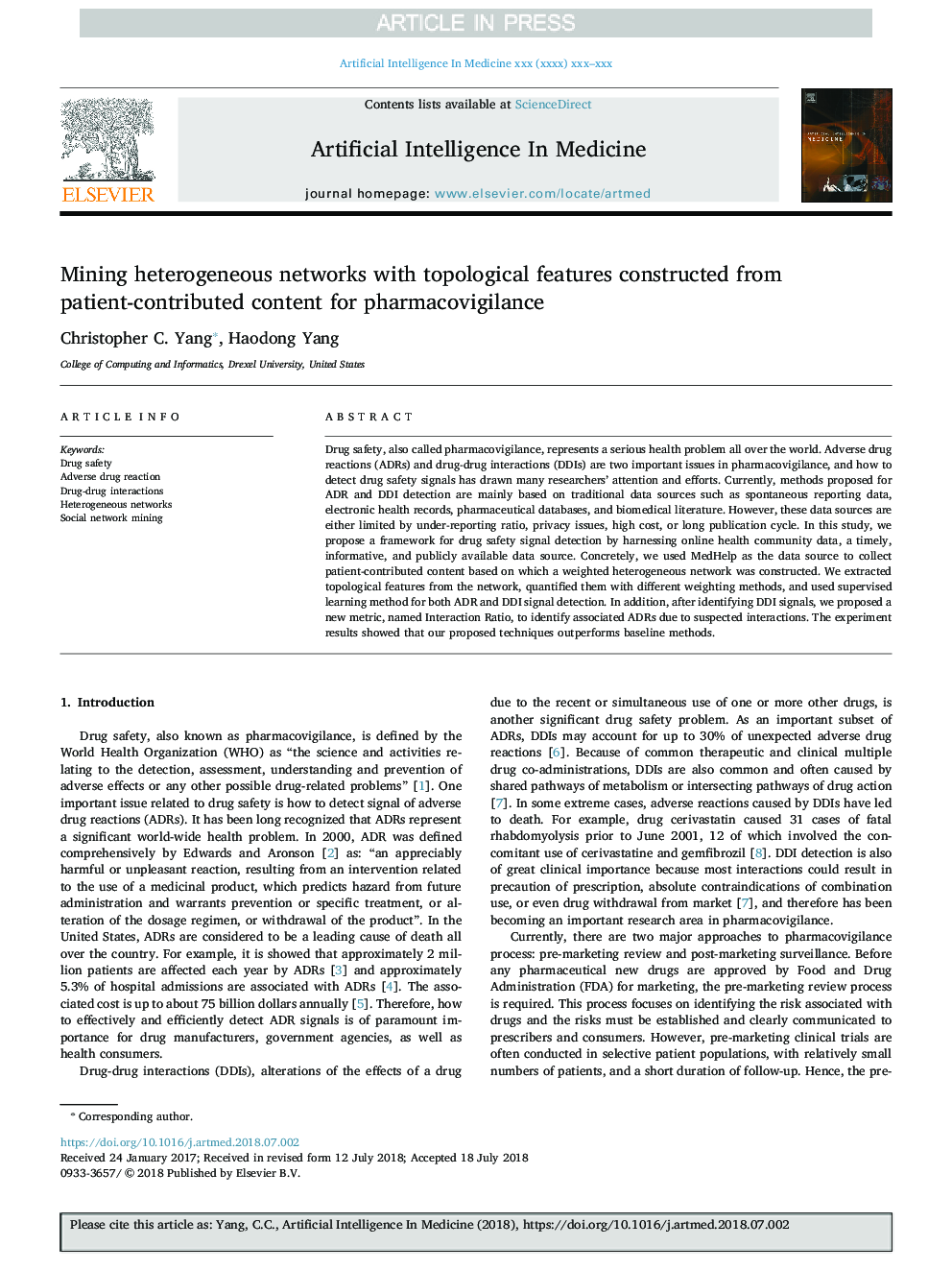| Article ID | Journal | Published Year | Pages | File Type |
|---|---|---|---|---|
| 8947359 | Artificial Intelligence in Medicine | 2018 | 11 Pages |
Abstract
Drug safety, also called pharmacovigilance, represents a serious health problem all over the world. Adverse drug reactions (ADRs) and drug-drug interactions (DDIs) are two important issues in pharmacovigilance, and how to detect drug safety signals has drawn many researchers' attention and efforts. Currently, methods proposed for ADR and DDI detection are mainly based on traditional data sources such as spontaneous reporting data, electronic health records, pharmaceutical databases, and biomedical literature. However, these data sources are either limited by under-reporting ratio, privacy issues, high cost, or long publication cycle. In this study, we propose a framework for drug safety signal detection by harnessing online health community data, a timely, informative, and publicly available data source. Concretely, we used MedHelp as the data source to collect patient-contributed content based on which a weighted heterogeneous network was constructed. We extracted topological features from the network, quantified them with different weighting methods, and used supervised learning method for both ADR and DDI signal detection. In addition, after identifying DDI signals, we proposed a new metric, named Interaction Ratio, to identify associated ADRs due to suspected interactions. The experiment results showed that our proposed techniques outperforms baseline methods.
Keywords
Related Topics
Physical Sciences and Engineering
Computer Science
Artificial Intelligence
Authors
Christopher C. Yang, Haodong Yang,
